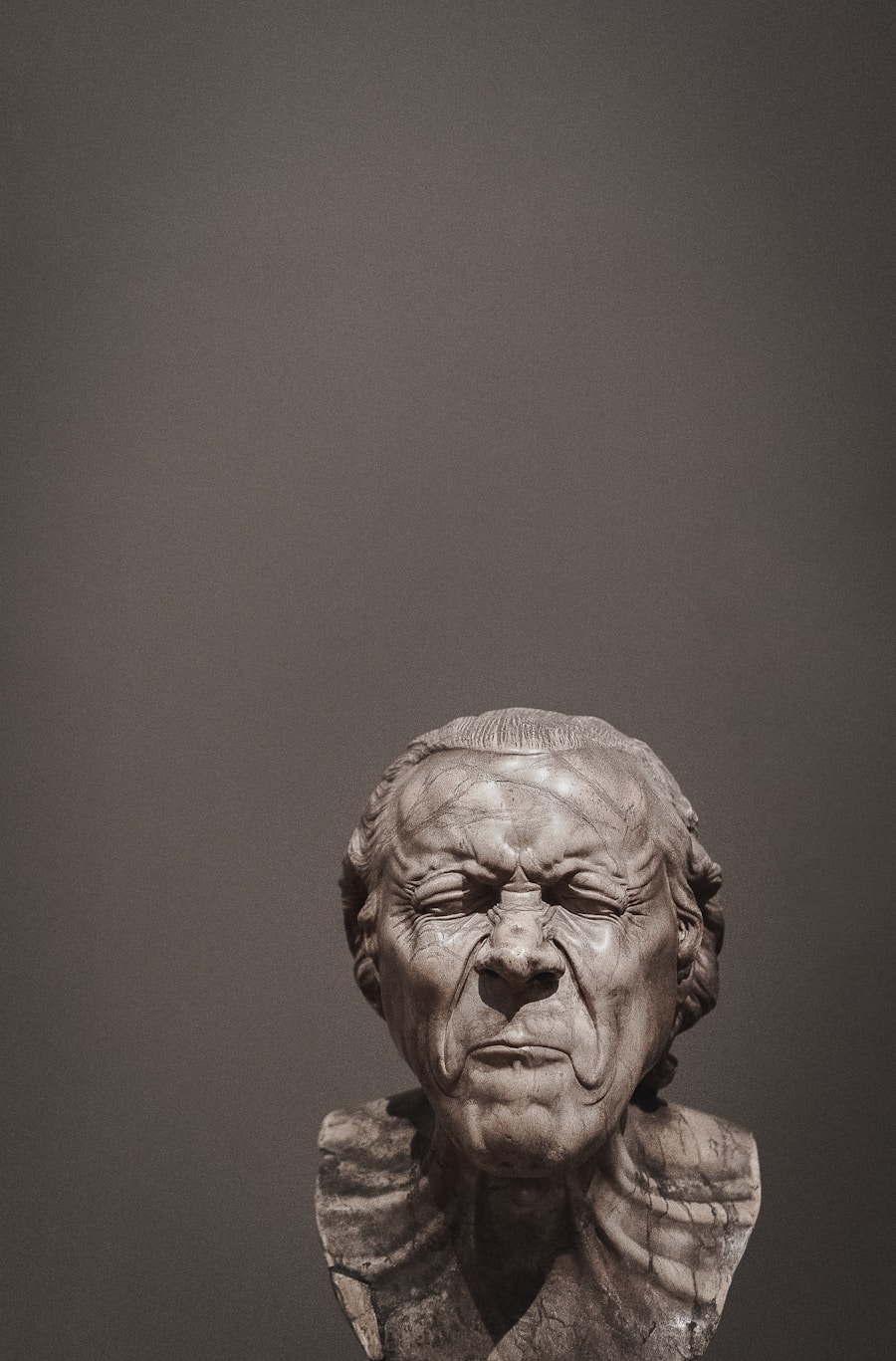The advent of modern communication technologies has transformed the way we engage with information and ideas. Historical figures, once confined to the pages of textbooks, could have leveraged these platforms to amplify their messages and connect with broader audiences. The impact of social media, podcasts, and video content on the perception of these figures is profound.
You may wonder how figures like Winston Churchill or Marie Curie would navigate today’s digital landscape. This exploration delves into the potential interactions between historical figures and contemporary mediums. By examining how these individuals might utilise platforms such as social media, podcasts, and video content, we can gain insights into their enduring relevance.
The digital age offers a unique lens through which to view their contributions and philosophies, allowing for a richer understanding of their legacies.
Summary
- Historical figures would use Twitter and Instagram to share their thoughts, engage with followers, and shape their public image in the modern era.
- Podcasts and interviews could bring historical figures to life through imagined conversations, providing a new perspective on their lives and legacies.
- Historical figures’ quotes and images could go viral through memes and viral content, reaching a wider audience and sparking discussions.
- Famous historical figures would advocate for social causes and influence others in today’s world, using their platform to bring about positive change.
- YouTube and video content could bring historical figures to life through visual storytelling, making their stories more accessible and engaging for modern audiences.
Social Media: How Famous Historical Figures Would Use Platforms Like Twitter and Instagram
Imagine Winston Churchill tweeting about the importance of resilience during challenging times.
You can envision him engaging with followers, responding to questions, and sharing insights from his experiences during World War

Similarly, figures like Cleopatra could utilise Instagram to showcase her political acumen and cultural influence. Through visually striking posts, she might highlight her diplomatic achievements and the richness of Egyptian culture. This platform would allow her to connect with a younger audience, fostering an appreciation for her historical significance.
The immediacy of social media would enable these figures to shape public discourse in real-time. You might consider how their interactions could influence contemporary political movements or social issues. Would Churchill’s rhetoric inspire modern leaders?
Would Cleopatra’s advocacy for cultural exchange resonate in today’s globalised world?
Podcasts and Interviews: Imagining Conversations with Historical Figures in the Modern Era
Podcasts have emerged as a powerful medium for storytelling and education. Imagine tuning in to a podcast where you could listen to a conversation with Albert Einstein discussing the implications of his theories on modern science. His insights could bridge the gap between complex scientific concepts and everyday understanding, making his work accessible to a wider audience.
You might also envision a series where influential women from history, such as Emmeline Pankhurst, share their experiences in advocating for women’s rights. Through candid discussions, listeners could gain a deeper appreciation for the struggles and triumphs faced by these pioneers. The format allows for nuanced conversations that can challenge prevailing narratives and inspire action.
These imagined dialogues would not only humanise historical figures but also provide context for their contributions. You may reflect on how such discussions could influence contemporary debates on science, gender equality, or social justice.
Memes and Viral Content: How Historical Figures’ Quotes and Images Could Go Viral Today
The phenomenon of memes has revolutionised how we share ideas and humour online. Consider how a powerful quote from Mahatma Gandhi could be transformed into a meme that circulates widely on social media. His message of non-violence and peace could resonate with current movements advocating for social justice, making his wisdom relevant in today’s context.
You might also think about how iconic images of historical figures could be repurposed to comment on contemporary issues. For instance, a photograph of Rosa Parks could accompany a caption addressing modern-day civil rights challenges. This visual storytelling would not only honour her legacy but also galvanise support for ongoing struggles against inequality.
The viral nature of such content raises questions about the responsibility of creators in representing historical figures accurately. How can you ensure that the essence of their messages remains intact while engaging a modern audience?
Influencer Culture: What Famous Historical Figures Would Influence and Advocate for in Today’s World

The Power of Historical Influencers
For instance, one can imagine Nelson Mandela utilising his platform to promote peace and reconciliation in post-conflict societies. His influence would undoubtedly have a profound impact on modern-day discussions surrounding conflict resolution and social justice.
Advocating for Social Change
Figures like Florence Nightingale could advocate for healthcare reform and public health initiatives. Her commitment to nursing and improving medical practices would resonate strongly in today’s discussions about healthcare accessibility and quality. One may ponder how these historical influencers would navigate partnerships with brands or organisations aligned with their values.
Maintaining Authenticity in the Digital Age
Would they endorse products that reflect their principles? How would they maintain authenticity while engaging with commercial interests? These are pertinent questions that highlight the complexities of influencer culture and the importance of staying true to one’s values in the face of commercial pressures.
YouTube and Video Content: Bringing Historical Figures to Life through Video and Visual Storytelling
YouTube has become a dominant platform for education and entertainment. Imagine a documentary series featuring historical figures brought to life through dramatizations and expert commentary. You could watch episodes dedicated to the lives of figures like Leonardo da Vinci or Joan of Arc, exploring their contributions through engaging narratives.
Video content allows for creative storytelling that can captivate audiences while educating them about history. You might consider how animated videos could simplify complex events or ideas, making them accessible to younger viewers. This approach could foster an interest in history among students who may otherwise find traditional methods unengaging.
The potential for visual storytelling raises important questions about representation and accuracy. How can you ensure that these portrayals honour the complexities of historical figures while appealing to contemporary sensibilities?
Online Activism: How Historical Figures Would Engage in Online Advocacy and Social Justice Movements
The rise of online activism has transformed how individuals mobilise for social change. If historical figures were active today, they would likely engage in campaigns addressing issues such as climate change, racial equality, or gender rights. You can envision Martin Luther King Jr.
using social media to galvanise support for movements advocating for racial justice. Figures like Malala Yousafzai would undoubtedly leverage online platforms to promote education for girls worldwide. Her advocacy could inspire a new generation of activists committed to fighting for equal opportunities in education.
You may reflect on the strategies these figures would employ in their online activism. Would they focus on grassroots movements or collaborate with established organisations? How would they balance their messages to resonate with diverse audiences while remaining true to their core beliefs?
Reflecting on the Relevance and Impact of Historical Figures in the Digital Age
The digital age offers unprecedented opportunities to engage with historical figures and their legacies. By exploring how they might navigate modern mediums, you gain insights into their enduring relevance in contemporary society. Their messages continue to inspire action and provoke thought across various platforms.
As you consider the implications of this exploration, think about your role in preserving and promoting these legacies. How can you contribute to discussions that honour their contributions while addressing current challenges? The intersection of history and modernity invites you to reflect on your responsibilities as a custodian of knowledge.
Engaging with historical figures through modern mediums enriches our understanding of their impact on society. Their voices remain vital in shaping conversations around justice, equality, and progress in today’s world.
FAQs
What is the article “What Famous Historical Figures Say Through Modern Mediums” about?
The article explores how famous historical figures might communicate their thoughts and ideas if they were alive today, using modern mediums such as social media, podcasts, and interviews.
Which historical figures are mentioned in the article?
The article mentions figures such as Abraham Lincoln, Cleopatra, Winston Churchill, Marie Curie, and Leonardo da Vinci, among others.
How does the article imagine these historical figures communicating through modern mediums?
The article imagines how these historical figures might use social media platforms like Twitter and Instagram, participate in podcasts and interviews, and engage with their audience through modern communication channels.
What is the purpose of imagining historical figures in modern mediums?
The purpose is to make history more relatable and accessible to modern audiences, and to explore how the thoughts and ideas of historical figures might be communicated in today’s digital age.
Does the article provide direct quotes from historical figures?
No, the article does not provide direct quotes from historical figures, as it is a speculative piece imagining how these figures might communicate if they were alive today.



















